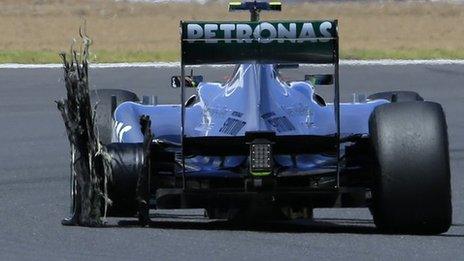The FIA reject Pirelli's proposal to go back to last year's tyres
- Published
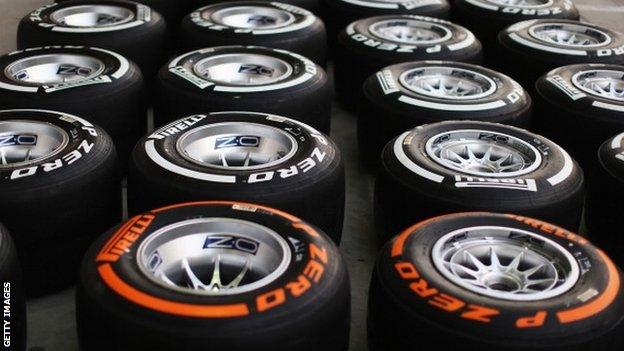
Formula 1's governing body has rejected a proposal from Pirelli to go back to last year's tyres in the wake of concerns over the state of the sport.
After the last race in Spain, Pirelli said it wanted to make changes to the tyres amid complaints their fragility had made tyre-management too important.
It proposed reverting to the tyres run in 2012 but F1's governing body, the FIA, says this would break the rules.
Only changes to prevent the series of recent failures will be allowed.
The FIA said going back to last year's tyres would not be allowed as it amounted to a change of specification.
Article 12.6.3 of the technical regulations dictates that it would require the agreement of all the teams for such a switch to happen.
Another part of the rules, article 12.5.2, gives the FIA leeway to ask the tyre supplier to change the tyre specification if it proves to be "technically unsuitable", but the governing body does not consider this to apply in this case.
World champions Red Bull, who feel that the performance of their car is being held back by needing to look after the tyres, have been pressuring Pirelli to make the tyres more durable.
Mercedes, who are having problems with excessive rear tyre usage, are also keen on a change.
Lotus, Ferrari and Force India, the three teams whose cars use up their tyres the least, do not accept that a change needs to be made.
The FIA has been concerned by the number of tyre failures in recent races and has asked Pirelli to modify the tyres to prevent this happening.
There were four similar failures in the last two races, where tyres that had been cut subsequently overheated and the tread tore off the carcass.
The issue is with the bonding between the tread and the carcass.
Pirelli will have to find a way to make that bond stronger without overly influencing performance. A source said that should not be particularly difficult.
A Pirelli spokeswoman said: "We are looking at what the change will be and trying to minimise its effect, so as not to advantage one team over another.
"We are trying to find the best solution that makes the least change in itself, hopefully will lead to (just) three pit stops, and to prevent the delaminations, which are not a safety issue but which don't look good."
A leading engineer told BBC Sport that the number of pit stops would likely naturally reduce from now on as the first five races were on some of the most demanding tracks in terms of tyre wear. He said that, of the remaining races this season, only Japan's Suzuka circuit compares with Malaysia, Bahrain and Barcelona.
Pirelli entered F1 in 2011 with a remit to supply tyres that wear out and/or degrade at a rate that will guarantee two or three pit stops at most races.
In Spain on 5 May, Ferrari's Fernando Alonso made four pit stops on his way to victory, as did Red Bull's Sebastian Vettel in winning in Malaysia in March.
Alonso and Vettel each made three stops on their way to victory in China and Bahrain, while Lotus's Kimi Raikkonen made two in winning the first race of the season in Australia.
Pirelli has changed the construction and compound of the tyres this year in a way that makes them behave differently.
The teams were all provided with a set of 2013-specification tyres to try at last year's season-ending Brazilian Grand Prix.
Those who are against a change argue that all the teams have had the same data from Pirelli and that it is up to them to adapt their cars to suit the tyres.
- Published17 May 2013
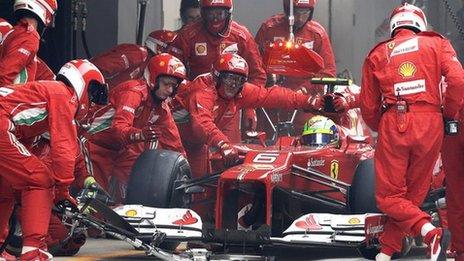
- Published16 May 2013
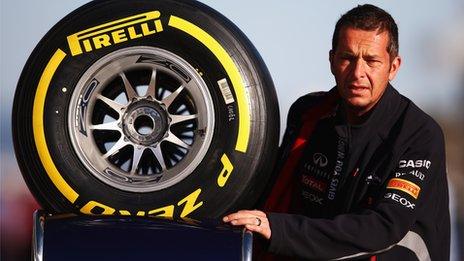
- Published14 May 2013

- Published13 May 2013
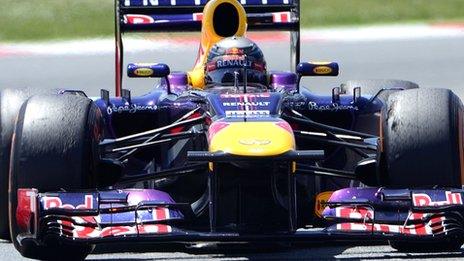
- Published12 May 2013

- Published11 May 2013
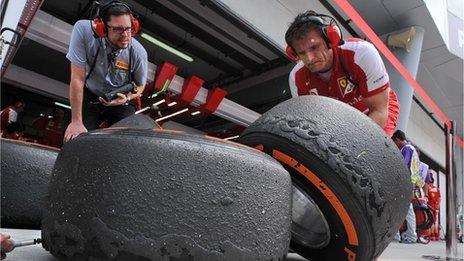
- Published1 July 2013
